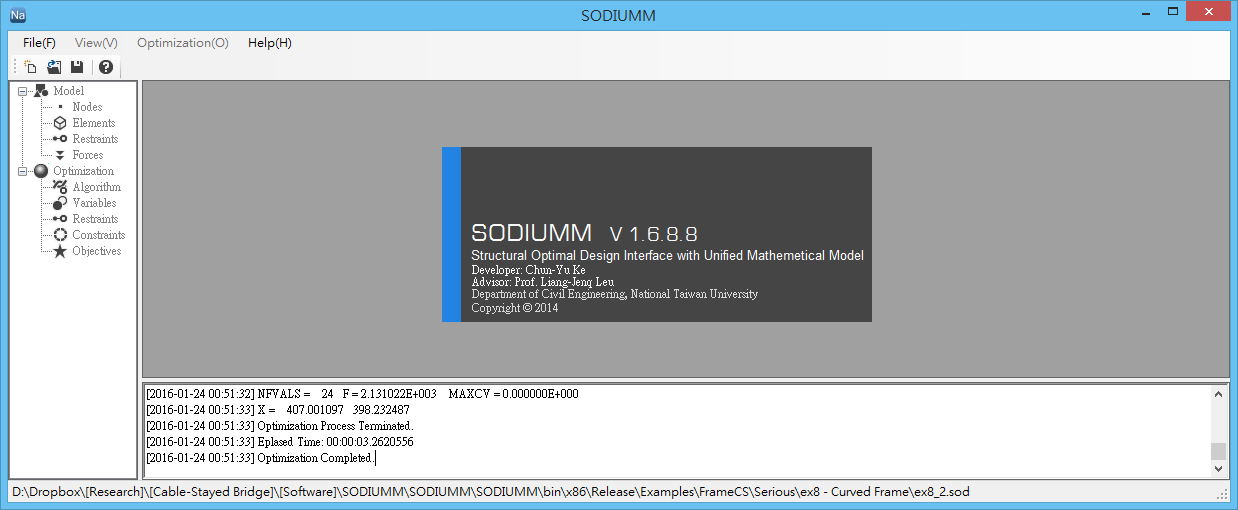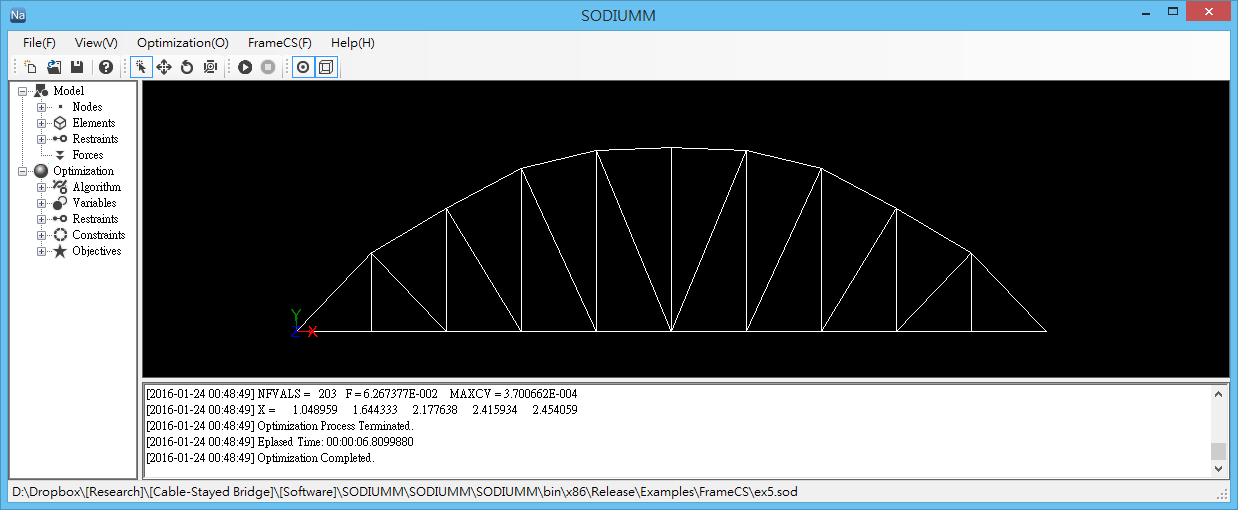SODIUMM: Structural Optimal Design Software with Unified Mathematical Models
SODIUMM is a structural optimal design software with GUI that shows real-time optimization process of the structure. It adopts numerous optimization algorithms and adapts several commercial structural analysis software, such as SAP2000, into a unified platform that is meant for multi-level optimization process and has several handy features such as text defined functions and Lagrange interpolations.

The development of this software suite was initiated by an industry/university cooperative research project: “The Optimization of Single-pylon Cable-stayed Bridge”. Through this research project, I saw promising futures in the optimal design of cable-stayed bridges, not only in the single-pylon ones but in all types of them. The research team of that project and my further research was supervised by Professor Leu, chairman of the department of Civil Engineering in NTU, led by me and consisted of three other graduate students. The further research formed the topic of my master’s thesis, and I enriched this research with various variations of design scenarios.

To explore the possibilities of optimal design of cable-stayed bridges, I independently developed this structure optimal design software with GUI that shows real-time optimization process of the structure. It adopts numerous optimization algorithms and adapts several commercial structural analysis software into a unified platform that is meant for multi-level optimization process and has several handy features such as text defined functions and Lagrange interpolations. During the development process, I’ve handled algorithms and APIs written in C++, MATLAB, Python, Java, and C#. The software was developed with .NET framework and XNA framework in C#. It got used in other associated projects as well, even still using by my previous research team in the current projects after I’ve graduated.

SODIUMM can solve versatile types of engineering optimization problems, as long as the variable is properly adapted to the interface and the optimization algorithm is well selected. With the virtual variable and the function feature, it can solve linear/nonlinear optimization problems without any structural analysis model as well.